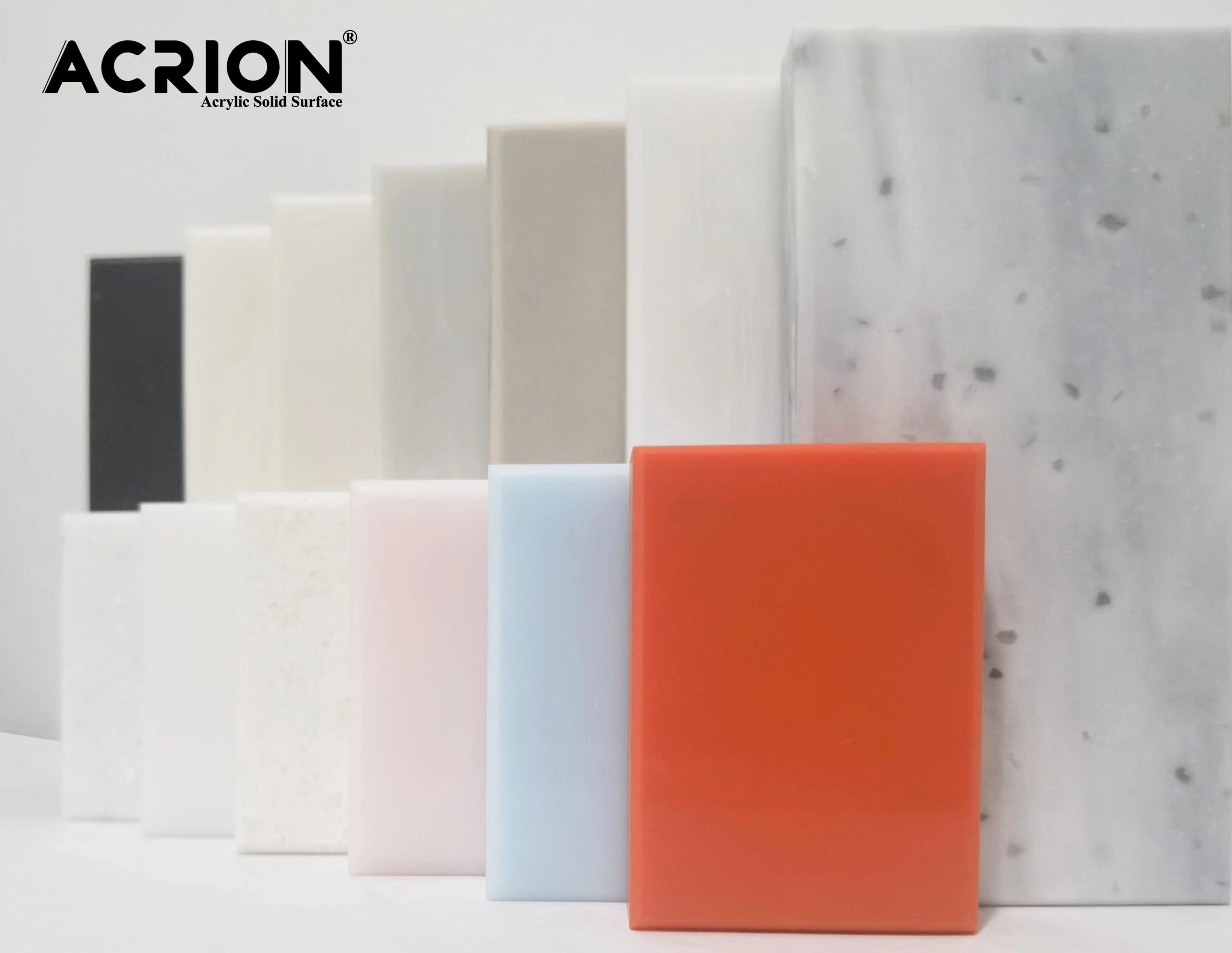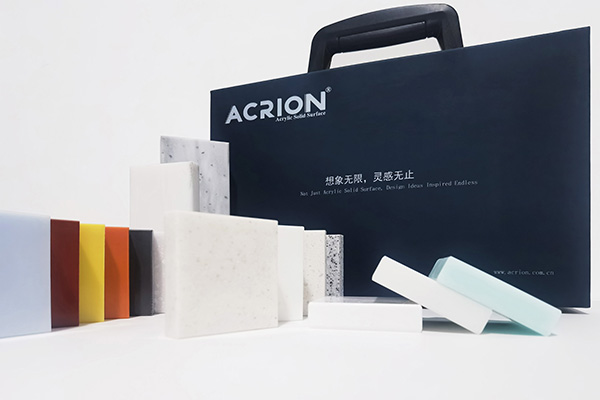Schritte zur gründlichen Reinigung von Acrion-Arbeitsplatten: Eine detaillierte Anleitung
Acrion-Arbeitsplatten sind aufgrund ihres nahtlosen Designs und ihrer Langlebigkeit eine beliebte Wahl für Küchen und Badezimmer. Allerdings erfordern sie, wie jede Oberfläche, eine regelmäßige gründliche Reinigung, um ihr Aussehen und ihre Hygiene zu erhalten. Im Laufe der Zeit können sich Schmutz, Fett und Flecken ansammeln, wodurch die Arbeitsplatte langweilig und unansehnlich aussieht. Diese Anleitung bietet eine Schritt-für-Schritt-Anleitung zur effektiven Tiefenreinigung von Acrion-Arbeitsplatten, ohne Schäden zu verursachen.
Verständnis der Bedeutung der tiefen Reinigung
Tiefenreinigung ist mehr als nur das Abwischen der Oberfläche. Dabei geht es darum, festsitzenden Schmutz, Ruß und Flecken zu entfernen, die bei der regelmäßigen Reinigung möglicherweise übersehen werden. Bei Acrion-Arbeitsplatten hilft eine gründliche Reinigung:
- Shine wiederherstellen: Mit der Zeit kann die Oberfläche aufgrund des Aufbaus von Rückständen ihren Glanz verlieren. Die tiefe Reinigung beseitigt diese Schichten und zeigt das ursprüngliche glänzende Finish.
- Bakterienwachstum verhindern: Lebensmittelpartikel und Verschüttungen können in mikroskopische Poren eindringen und einen Brutboden für Bakterien erzeugen. Eine gründliche Reinigung beseitigt diese versteckten Verunreinigungen.
- Lebensdauer verlängern: Die regelmäßige tiefe Reinigung verhindert die Ansammlung von abrasiven Partikeln, die die Oberfläche im Laufe der Zeit kratzen können, wodurch die glatte Textur erhalten bleibt.
Vorbereitung auf eine tiefe Reinigung
Sammeln Sie vor Beginn des tiefen Reinigungsprozesses die erforderlichen Werkzeuge und Materialien, um Effizienz und Sicherheit zu gewährleisten.
Vorräte sammeln
Sie benötigen die folgenden Elemente:
- Milde Schalenseife: Ein sanfter, nicht scheuernder Reiniger, der die Acrion-Oberfläche nicht angreift.
- Warmes Wasser: Hilft effektiv Fett und Schmutz zu lösen.
- Weicher Schwamm oder Mikrofasertuch: Vermeiden Sie Scheuerschwämme oder Stahlwolle, da diese die Oberfläche zerkratzen können.
- Backpulver: Ein natürliches, mildes Schleifmittel, das hilft, hartnäckige Flecken zu entfernen, ohne die Arbeitsplatte zu beschädigen.
- Weißer Essig (optional): Kann in verdünnter Form zur Desinfektion verwendet werden. Vermeiden Sie jedoch eine unverdünnte oder zu häufige Anwendung, da der Säuregehalt mit der Zeit die Oberfläche angreifen kann.
- Saubere Handtücher: Zum Trocknen der Arbeitsplatte nach der Reinigung.
Räumung der Arbeitsplatte
Entfernen Sie alle Gegenstände von der Arbeitsplatte, einschließlich Haushaltsgeräten, Utensilien und Dekorationsstücken. Dies stellt sicher, dass Sie ungehinderten Zugang zu jedem Zentimeter der Oberfläche haben und eine gründliche Reinigung ermöglichen.
Schritt-für-Schritt-Tiefenreinigungsprozess
1. Erstspülung und Staubentfernung
Beginnen Sie zunächst die Arbeitsplatte mit warmem Wasser abspülen, um losen Schmutz und Schmutz zu entfernen. Verwenden Sie Ihre Hände oder ein weiches Tuch, um sichtbare Partikel vorsichtig abzuwischen. Dieser Schritt verhindert, dass das Kratzen der Oberfläche während des nachfolgenden Schrubbenprozesses kratzt.
2. Erstellen einer Reinigungslösung
Mischen Sie ein paar Tropfen mildes Spülmittel mit warmem Wasser in einem Eimer oder Waschbecken. Rühren Sie die Lösung, bis sich Schaum bildet. Bei hartnäckigeren Flecken können Sie eine Paste herstellen, indem Sie Backpulver mit einer kleinen Menge Wasser vermischen. Diese Paste wirkt als sanftes Schleifmittel und entfernt hartnäckigen Schmutz, ohne das Acrion zu zerkratzen.
3.. Die Oberfläche schrubben
Tauchen Sie einen weichen Schwamm oder ein Mikrofaser -Tuch in das Seifenwasser und ringen Sie überschüssige Flüssigkeit aus. Beginnen Sie mit dem Schrubben der Arbeitsplatte in einer kreisförmigen Bewegung und konzentrieren Sie sich auf Bereiche mit sichtbaren Flecken oder Aufbau. Achten Sie besondere Aufmerksamkeit auf Ecken und Kanten, an denen sich Schmutz ansammelt. Tragen Sie bei hartnäckigen Flecken eine kleine Menge der Backpulver-Paste direkt auf die Stelle auf und schrubben Sie vorsichtig mit einem weichbisteten Pinsel oder Ihrem Finger.
4. Behandeln bestimmter Flecken
Verschiedene Arten von Flecken erfordern maßgeschneiderte Ansätze:
- Fettflecken: Diese sind bei Küchenarbeitsplatten üblich. Streuen Sie eine kleine Menge Backpulver über den Fettfleck und sprühen Sie dann eine Mischung aus Wasser und weißem Essig (1:1 verdünnt) auf das Backpulver. Die Reaktion hilft dabei, das Fett anzuheben. Lassen Sie es einige Minuten einwirken, bevor Sie es mit einem weichen Tuch schrubben.
- Wasserflecken: Mineralablagerungen durch hartes Wasser können trübe Flecken auf der Oberfläche hinterlassen. Um sie zu entfernen, tränken Sie ein Tuch mit weißem Essig (mit Wasser verdünnt) und legen Sie es über den Fleck. Lassen Sie es 15–20 Minuten einwirken, wischen Sie dann die Rückstände ab und spülen Sie es gründlich aus.
- Tinten- oder Farbstoffflecken: Bei Tinten- oder Farbflecken befeuchten Sie ein Tuch mit Reinigungsalkohol (Isopropylalkohol) und tupfen Sie den Fleck vorsichtig ab. Vermeiden Sie Reiben, da dies den Fleck verteilen kann. Spülen Sie den Bereich mit Wasser ab und trocknen Sie ihn sofort.
5. Spülen und Trocknen
Spülen Sie die Arbeitsplatte nach dem Schrubben und Behandeln von Flecken gründlich mit sauberem, warmem Wasser ab, um alle Seifen- und Reinigungsmittelrückstände zu entfernen. Wischen Sie verbleibende Rückstände mit einem sauberen, feuchten Tuch ab. Trocknen Sie die Oberfläche abschließend mit einem sauberen Handtuch ab, um Wasserflecken und -streifen zu vermeiden. Stellen Sie sicher, dass die Arbeitsplatte vollständig trocken ist, bevor Sie Gegenstände austauschen.
Wartungstipps nach der Reinigung
Um sicherzustellen, dass Ihre Acrion-Arbeitsplatte auch nach gründlicher Reinigung immer optimal aussieht, befolgen Sie diese einfachen Wartungsgewohnheiten:
- Verschüttete Flüssigkeiten sofort abwischen: Zufällige Verschüttungen sollten so schnell wie möglich aufgeräumt werden, um eine Färbung zu verhindern. Verwenden Sie ein weiches Tuch oder einen Schwamm und eine milde Seife und Wasser.
- Vermeiden Sie harte Chemikalien: Verwenden Sie keine Scheuermittel, Bleichmittel oder Ofenreiniger, da diese die Acrion-Oberfläche beschädigen können. Bleiben Sie bei sanften, nicht scheuernden Produkten.
- Verwenden Sie Schneidebretter und Trivetten: Schützen Sie die Arbeitsplatte vor Kratzern und Wärmeschäden, indem Sie Schneidebretter unter Messer und Trivetten unter heißen Töpfen und Pfannen legen.
- Regelmäßiges Staub: Ein schnelles Auslösen mit einem Mikrofasertuch täglich kann die Ansammlung von Staub und Schmutz verhindern, wodurch die Notwendigkeit einer häufigen tiefen Reinigung verringert wird.
Bewältigung häufiger Reinigungsherausforderungen
Trotz aller Bemühungen kann es bei der Tiefenreinigung zu Herausforderungen kommen. So gehen Sie damit um:
- Hartnäckige Flecken: Wenn sich ein Fleck auch nach mehreren Versuchen nicht lösen lässt, ziehen Sie in Betracht, einen professionellen Reiniger zu konsultieren, der auf feste Oberflächen spezialisiert ist. Möglicherweise haben sie Zugang zu stärkeren und dennoch sicheren Reinigungsmitteln.
- Kratzer vom Reinigen: Wenn Sie beim Reinigen versehentlich die Oberfläche zerkratzen, geraten Sie nicht in Panik. Kleinere Kratzer lassen sich häufig mit einem feinkörnigen Schleifpapier (Körnung 1200 oder höher) auspolieren und anschließend mit einem weichen Tuch und einem milden Schleifmittel polieren.
- Mattheit nach der ReinigungHinweis: Wenn die Arbeitsplatte nach der Reinigung matt erscheint, kann das an Rückständen von Reinigungsmitteln liegen. Spülen Sie die Oberfläche gründlich mit Wasser ab und trocknen Sie sie vollständig ab. Wenn das Problem weiterhin besteht, kann eine neue Schicht Politur für Acrion-Oberflächen helfen, den Glanz wiederherzustellen.
Indem Sie diese detaillierten Schritte befolgen und die regelmäßige Wartung in Ihre Routine integrieren, können Sie sicherstellen, dass Ihre Acrion-Arbeitsplatte auch in den kommenden Jahren sauber, hygienisch und optisch ansprechend bleibt.



